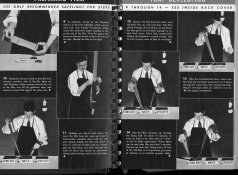Doremus Scudder
Member
There are some good reasons to pre-soak. Certainly when developing sheet film in batches and agitating by shuffling, it is necessary to pre-soak the sheets so they don't stick together in the developer. Pre-soaking also ensures that film, tank and reel are at the same temperature as the developer when it is introduced; this is the reasoning behind the recommendation to pre-soak from rotary development systems like Jobo. If there is no way to get film immersed quickly in the developer, e.g., pour-in time is too long and direct immersion is impossible, then a pre-soak will help with evenness (as will longer developing times). Finally, as some have noted, the anti-halation dye, which comes off in a pre-soak, may react with some developers and cause foaming; in this case, a pre-soak prevents this.
For most roll-film users and those who develop sheet film in large tanks with hangers or one-at-a-time in trays, a pre-soak is not necessary as long as temps are not extreme and the film can be immersed quickly into the developer. That is why it isn't recommended. That said, I have never seen a case where an adequate (i.e., not too short) pre-soak has caused adverse effects. I suspect the reason some caution that a pre-soak can cause uneven development is that unless you wait long enough for the emulsion to completely saturate with water (2-3 minutes minimum), there will be areas where the developer is taken up more quickly than others. Still I have never seen this.
Bottom line: pre-soak if you have a specific need to, otherwise forget it.
Best,
Doremus
For most roll-film users and those who develop sheet film in large tanks with hangers or one-at-a-time in trays, a pre-soak is not necessary as long as temps are not extreme and the film can be immersed quickly into the developer. That is why it isn't recommended. That said, I have never seen a case where an adequate (i.e., not too short) pre-soak has caused adverse effects. I suspect the reason some caution that a pre-soak can cause uneven development is that unless you wait long enough for the emulsion to completely saturate with water (2-3 minutes minimum), there will be areas where the developer is taken up more quickly than others. Still I have never seen this.
Bottom line: pre-soak if you have a specific need to, otherwise forget it.
Best,
Doremus









 .
.


